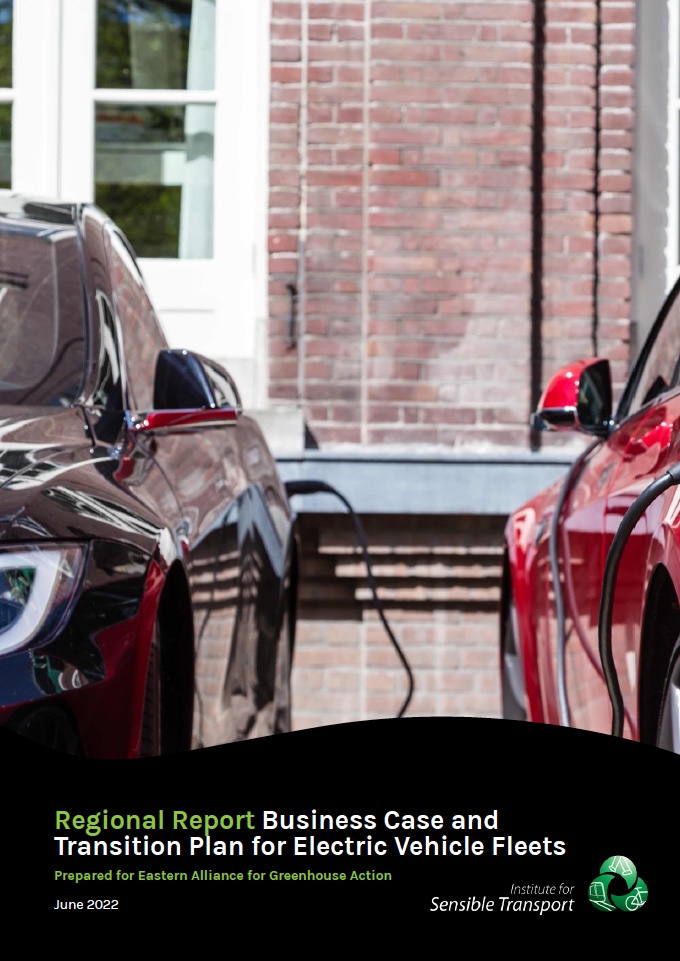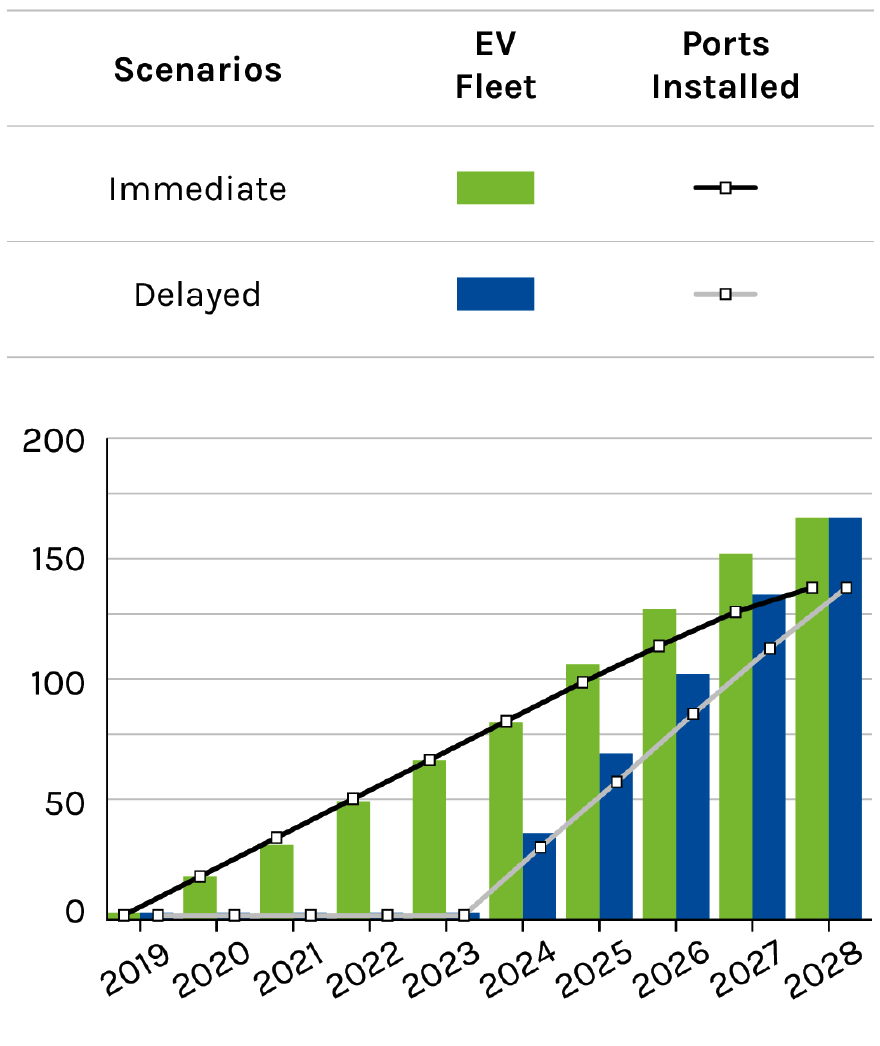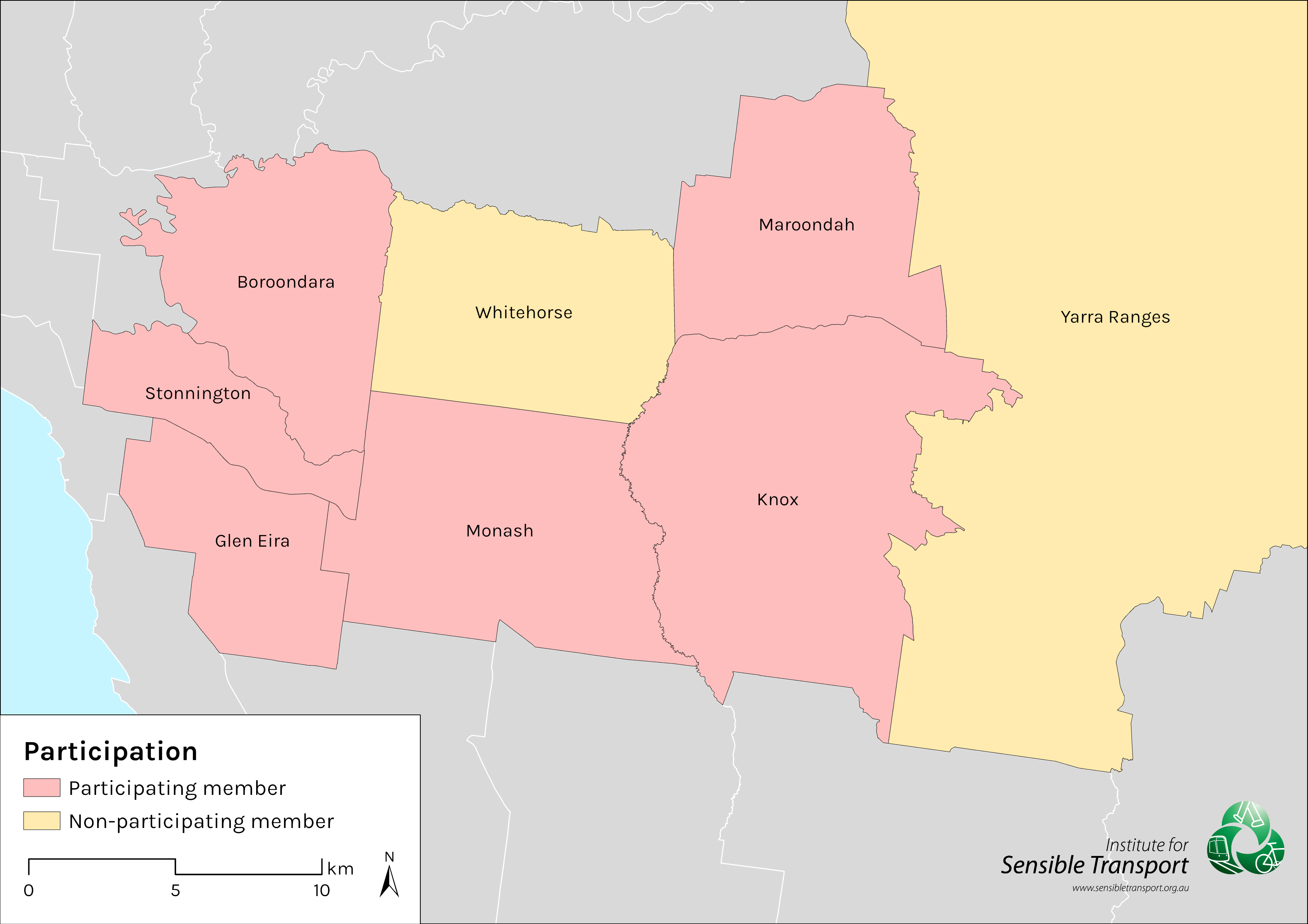Zero Emission Fleet Transition Business Case
We provided a business case to facilitate the transition to zero-emission fleets for multiple Melbourne councils.
Location
Eastern region of Melbourne
Budget
$100,000 -$120,000
Commencement
2021
Completion
2022
Overview
This project required the development of a detailed audit of the existing fleet and a tool that guided each council in matching zero emission replacements for fossil fuel vehicles. Cost and emission impact was included in the tool, as well as a plan for delivering EV charging to support the fleet transition.
As part of this project, our team conducted site visits to each council, including an examination of the switchboard and other electrical infrastructure, bill and demand assessment, resulting in a charging plan for each council. A training package for fleet managers, to enable them to use the tool effectively, was included as part of this project.
What we did
The Eastern Alliance for Greenhouse Action (EAGA) commissioned us to develop of a business case and transition plan for electric vehicle (EV) fleets, across six participating LGAs. Most of these councils now receive a 100% renewable energy supply, and thus a fleet conversion to EV will provide the reductions necessary to become carbon neutral by 2030.
Our work provided reports to the EAGA councils covering:
- An introduction to EVs, including the reasons why transitioning to EVs is important for Councils, and the barriers and challenges they may face.
- An analysis of the EAGA Councils’ vehicle fleets, as a whole region. This includes the profile of each council’s fleet, average use, fuel consumption, and estimated greenhouse gas emissions. This acts to create an understanding of Council fleets to assist in transition.
- An analysis of the EAGA Councils’ plant equipment. This includes a profile of each council’s plant assets. Further, a detailed assessment of electric options for plant is undertaken. This highlights whether electric options are currently available, and what limits or use considerations apply.


Our analysis included an assessment of the cost comparison between an internal combustion engine vehicle and an electric vehicle. This shows that under current arrangements, an EV must travel a considerable distance per year to be cost-competitive with an ICE vehicle.
Planning the transition pathway
Each of the councils included in this project was provided with a transition pathway. The graph below provides a conceptual illustration of the transition from internal combustion engine (ICE) vehicles to EVs, on a year-by-year basis. This shows both a delayed start and an immediate transition pathway.




Guiding fleet transition
This project analysed the vehicle fleet and plant equipment, to provide a vehicle-by-vehicle assessment. Each vehicle was provided with a transition time frame, cost and replacement model. The transition plan offered each participating Council with a transition pathway for each vehicle in their fleet.
Key trends in electric vehicles and charging
Several trends were identified that are likely to have a significant impact on EAGA members’ ability to meet its emissions reduction goals associated with their fleet in the future, including:
- Greater range of vehicle types, including SUVs, utes, vans, as well as a wider range of sedans. Some vehicle classes, such as utes, are not commercially available and it may be several years before these can be purchased at a cost-competitive price.
- Lower-cost models, including those at around $35,000 in 2023/24, available in Australia.
- Long-range vehicles, with batteries capable of a 500km+ range.
- Greater access to faster chargers, with the number of fast chargers increasing rapidly over the last two years.
- Availability of battery electric plant equipment, such as backhoes, excavators etc.
- More vehicles capable of accessing ultra-fast charging (250kW to 350kW), allowing vehicles to be charged to 80% in less than 10 minutes.
- Vehicle to Grid (V2G) and Vehicle to Load (V2L) capable vehicles, whereby the energy in the vehicle’s battery can be used to supply the grid, the home or offer a 240v power outlet for tools or appliances.

 More info about this project
More info about this project